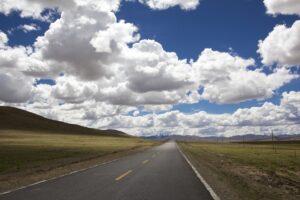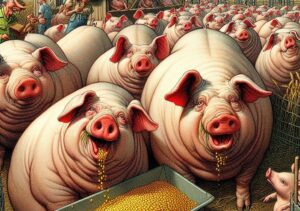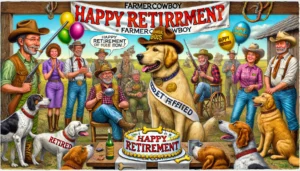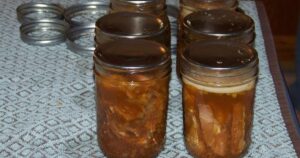With Christmas out of the way, the relative busy-ness of the farm continued. Luckily I was at least able to take a couple of days away at my girlfriend’s for some much needed headspace.
The most important task post-festivites was weaning my calves. Something about which I knew nothing and was very nervous. There are lots of options for taking the calves away from their mums, and even one option where you don’t take them away at all!
 |
| Here is Engelbert standing behind his mum, cow-624, suckling. He is massive, and clearly no longer requires his mum’s milk. Definitely the time for weaning. |
That ‘do nothing’ option is known as natural weaning. In theory the cows know that they are pregnant and that they must stop their current calf from suckling. They will often do this by kicking the calf off, and the calf should learn…. However, that isn’t always the case. And it’s obviously very important that the new calf gets all the milk (especially the colostrum), or else it would be very detrimental to the newborn.
There is then the option to hard wean. Here, you very simply separate the cows and calves, usually a month or two before the next lot of calves are due. It allows the cows’ udders to heal fully ready for the new calves, and ensures there is no chance of milk thievery! However, it will tend to create a massive din, with both cows and calves lo-ing for each other. This adds a lot of stress to both calves and cows, and the calves’ condition can go backwards. The stress is often manifested by the youngsters pacing. The calves are happily on a diet of grass at this stage, so it isn’t the loss of milk causing any condition-loss, just the stress.
Somewhere in between these two options is a gentler approach. If you decide to house your cows in a shed you can use something called a calf gate. This gate is too narrow for the cows to pass through, allowing the best grub to be given to the calves, one side of the gate, and slightly less good fare to go to the cows – encouraging calves away from their mums. After a while the gate is closed and the two groups separated.
For me, natural weaning just felt a little too risky this year, although it is something I am super interested in. And I will hopefully be visiting a farmer in the next few months who practises this with her large herd.
I also didn’t want to house my cattle. Often with hard weaning either the cows, calves or both are housed, and they can get their bellowing out of the way in the yard. The method with the calf gate is usually performed in a shed too. The issue with housing cattle is that it can cause disease spread, especially when stressed (i.e. at weaning!). On top of that, it’s more work having them in a shed than out-Wintering them in fields (as well as less natural).
With none of these options looking good for me, I decided to speak to a couple of exceptional cattle farmers I know through Instagram: Frankie Guy from Wiltshire and Geoff Williams from Cornwall (really hoping to visit them both soon). From our conversations I landed on a type of weaning that I felt fitted the bill for me – for this year at least. A method that isn’t ridiculous from a time perspective, but is meant to be very effective: quiet weaning.
Quiet weaning involves the use of nose flaps. These are a physical barrier that gets popped in the calf’s nose, holding on in the nostrils, that quite simply prevents the calf from being able to get to its mum’s udder. You put them on the calf for between four and ten days, after which physical separation occurs. This essentially breaks the weaning process into its two constituent parts: preventing suckling, before separating to break the bond.
 |
| This is the idea. Kinda… |
I had planned for weaning my animals, and had therefore set up my mobile handling unit and cattle crush in the middle of a field with a number of paddocks around it. This is the location I used last month for removing the heifers that were served by the bull, whilst also working for installing the nose flaps, as well as removing the flaps and separating the animals later.
 |
| Cows and calves in the holding pen, being sorted ready for nose flaps. |
On New Year’s Day, Dad and I got the cows and calves into the holding pen. We then got each of the calves into the crush and I put on the plastic flaps. They weren’t necessarily the easiest to put on, especially with calf-Engelbert who is massive now! The calves could then go back out to graze, somewhat confused by their new appendage.
 |
| Dahlia with her nose-flap installed. |
 |
| Just look at the size of Engelbert! His nose matched the size of the rest of him, making twisting the nose-flap into place difficult! |
 |
| Cows and calves happily back grazing, but with the nose-flaps in preventing suckling. |
Over the coming days, I kept inspecting cow-udders, and the flaps really seemed to be working. I was very pleased. My intention was to give them somewhere between a week and ten days before the physical separation. On day six however I noticed a problem: Primula had figured out how to suckle around the flap! I had heard this could be an issue, so wasn’t surprised, but it was still annoying. More annoying still: that day and the day after were miserable and wet – not the conditions to be a) working with and separating livestock, and b) driving about with a cattle trailer on.
So we waited, and with day eight’s weather being resplendent, we split the cows and calves in the holding pen (which took a bit of effort), removed the flaps, and carted the calves down to a paddock on the marshes. Only 400m away, which felt a little close since cows and calves would be well within earshot, but that was the best choice I had. This operation highlighted one downfall with the flaps I used. I am sure it is partly down to my technique, but removing the flaps did cause a couple of the calves’ nostrils to show a small amount of blood, which I wasn’t happy with – even more so at this stressful time. It cleared up swiftly, and didn’t seem to distress the animal, however, there is an alternative nose flap utilising a mechanical spring design which should be easier to remove, so perhaps I will try those next year.
 |
| This day might have been resplendent. But it followed some miserable days. No way I would trust my Land Rover not to get stuck! |
 |
| Calves now separated from their mums. We just had to run them into the race to remove the flaps, and back them back out again, ready to be loaded into the trailer. |
 |
| Calves leaving the trailer to graze back on Fobbing Marshes. You can see one of the older cows (acting as matriarch) behind. |
With the animals separated, quiet weaning was really put to the test. I had opted to move an older cow who hadn’t got in calf, plus one of my IBR-positive heifers, with the calves, in the hope that the presence of older, calmer cows would help. The short answer is: nose flaps work. What’s more, Primula being smart and figuring out her way around the flap proved a fantastic experimental control for this method. It was only her and her mum, cow-101, who made noise over the coming days. The rest of the animals settled down really swiftly. And after just three or four days, both herds were back to their usual quiet selves. This did however give me four groups of cattle to keep an eye on.
On 26th January, those four groups reduced again to three (thankfully). After five weeks and a day I took Kestrel the bull out from his time with thirteen heifers (heifers being a cow that has yet to have her first calf). The heifers have joined the weaned calves on the marshes. I’m intrigued as to how many Kestrel managed to successfully serve in this pretty short window of time. We will find out in a couple of months. The bull is now in a pen in the yard for just a couple of weeks (to make sure he doesn’t get out and serve any of the young quarantining heifers!). But he will soon be back outside again with the in-calf cows, ensuring he is able to graze and have company.
 |
| Kestrel with the Autumn calving group of cows. The heifer-cows were being separated off to go down to the marshes to join the weaned calves. |
 |
| Kestrel unfortunately is in a pen for a couple of weeks. However, it is a large pen, with outside space, so he can see the fields, and see what is going on in the farmyard. He will soon be back out with the cows. |
Additional to all the work with the cows, a number of other projects occurred in January. Another 100+ trees were planted (this time, just with a compact team of three: Pat, Paul and myself). It was apricots and hazelnuts / cobnuts this time, on a stunning, sunny Spring day which made the task joyous.
 |
| A planted cobnut. |
 |
| Pat and Paul. What a stunner of a day! |
Plus we have been focussing hard on trying to tidy up the farmyard – large-scale Spring cleaning! I have also had my annual Red Tractor inspection for
farming and food safety in my arable crops. I always hate being inspected, and there is so much paperwork now, but luckily it was a smooth two-hour affair without any issues.
The end of January is proving exceptionally dry, which means that I am looking to potentially sow the rest of my wheat – very early. Luckily we have completed the Winter maintenance on our seed-drill, and have all my wheat seed cleaned and ready to go. Take a read next month to see if that happened or not! Also, calves could start dropping any time from 9th February. So keep an eye on my Instagram for live updates.


















Learning is the foundation upon which we build our wisdom. ???